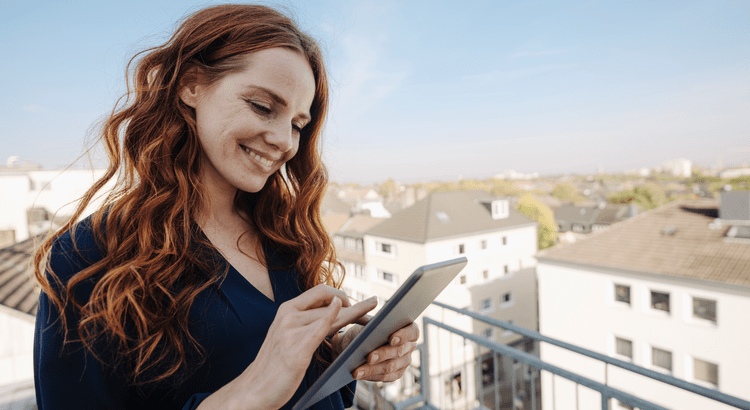With the growing concern for our planet’s well-being, more and more people are embracing sustainable living practices. And one area where this shift is particularly evident is in the real estate market. Eco-friendly homes have become increasingly popular as individuals seek to reduce their carbon footprint and live in harmony with nature.
In this blog post, we will explore the rising preference for eco-friendly homes in the real estate market and delve into what makes these houses environmentally friendly. We will also provide valuable tips on creating an eco-friendly home and offer expert advice on buying or renovating an existing property to align with sustainable living principles.
So, if you’re curious about joining the wave of environmentally conscious homeowners or simply want to learn more about eco-friendly housing options, keep reading! Discover how you can positively impact both your lifestyle and our planet by embracing sustainable living through eco-friendly homes.
Explanation of the Growing Preference for Eco-Friendly Homes in the Real Estate Market
The real estate market has seen a significant shift in recent years, with more and more homebuyers expressing a growing preference for eco-friendly homes. This trend can be attributed to several factors. First and foremost, there is an increasing awareness of the environmental impact of traditional housing construction methods and materials. People are becoming more conscious of their carbon footprint and are actively seeking out sustainable alternatives.
Furthermore, the rising energy cost has also played a role in driving the demand for eco-friendly homes. With rising energy prices, homeowners are looking for ways to reduce their utility bills through energy-efficient features such as solar panels, insulation upgrades, and smart home technology. Additionally, government incentives and tax credits have made it more financially appealing to invest in green homes.
This growing preference for eco-friendly homes reflects a larger societal shift towards sustainability and responsible living. As people become more aware of the need to protect our planet’s resources, they are choosing properties that align with their values and contribute positively to the environment.
What Are Eco-Friendly Houses?
Eco-friendly houses, also known as green homes or sustainable houses, are designed and built to minimize their environmental impact. These homes are constructed using environmentally friendly materials and technologies that reduce energy consumption, conserve water, and promote healthier indoor living environments.
One key aspect of eco-friendly houses is their use of renewable resources such as solar power, wind energy, and rainwater harvesting systems. These types of homes often utilize advanced insulation techniques to minimize heat loss or gain, reducing the need for excessive heating or cooling. In addition, eco-friendly houses prioritize water conservation by incorporating efficient plumbing fixtures and implementing greywater recycling systems.
Eco-friendly houses aim to create a harmonious relationship between humans and nature by minimizing waste production, optimizing resource utilization, and promoting healthier living environments. By embracing these principles in home construction and design practices, individuals can significantly contribute towards a more sustainable future for our planet.
Types of Eco-Friendly Houses
There are various types of eco-friendly houses that have gained popularity in the real estate market. With so many options to choose from, those wanting to become eco-friendly can customize their home.
Earthships
Earthships are a unique type of eco-friendly house that has gained popularity in recent years. These homes are designed to be completely self-sustaining, using recycled materials and renewable energy sources. They typically incorporate features like passive solar heating and cooling systems, rainwater collection systems, and even on-site waste treatment systems. Earthships are built with natural materials such as tires packed with earth or adobe bricks made from local soil. This construction method not only reduces waste but also provides excellent insulation properties.
The design of an Earthship is focused on harnessing the natural elements for maximum efficiency. The south-facing windows allow ample sunlight to enter the home during winter, while strategically placed overhangs block out excess heat during summer. Additionally, thick walls made from rammed earth provide thermal mass that helps regulate indoor temperatures year-round. With their innovative design and commitment to sustainable living practices, it’s no wonder that Earthships have become a popular choice among environmentally-conscious homeowners looking for an alternative housing option
Rammed Earth
Rammed Earth is an increasingly popular building technique that utilizes a mixture of earth, clay, sand, and gravel to construct strong and durable walls. This sustainable method has been used for centuries in various parts of the world and is gaining recognition for its environmental benefits.
The process involves compressing the earth mixture into wooden forms or molds, layer by layer, until it becomes solid. The result is a wall that provides excellent insulation and has natural thermal mass properties, helping regulate indoor temperatures throughout the year. Rammed Earth houses have a unique aesthetic appeal with their earthy tones and textured surfaces, blending seamlessly with their surroundings.
Prefab
Prefab, short for prefabricated homes in Minnesota, are gaining popularity in the real estate market due to their eco-friendly features. These homes are built off-site and then transported to the desired location, making construction faster and more efficient.
One of the main benefits of prefab homes is their sustainability. They are designed with energy-efficient materials and systems that reduce waste and minimize environmental impact. Additionally, prefab homes often incorporate renewable energy sources such as solar panels or geothermal heating systems, further reducing their carbon footprint.
Prefab homes offer a sustainable solution for those looking to live an eco-friendly lifestyle while also enjoying modern conveniences. With their quick construction process and environmentally-conscious design, these homes are becoming a top choice for individuals who want to positively impact both their lives and the planet.
Zero Carbon
Zero Carbon homes are becoming increasingly popular in the real estate market due to their significant environmental benefits. These homes are designed to produce zero carbon emissions, making them highly sustainable and energy-efficient. The concept behind Zero Carbon houses is to minimize their ecological footprint by incorporating renewable energy sources such as solar power and geothermal heating systems.
In addition to utilizing clean energy technologies, Zero Carbon homes also focus on reducing overall energy consumption through efficient insulation, advanced ventilation systems, and smart home technology. By adopting a holistic approach to sustainability, these homes aim to achieve a net-zero impact on the environment. This means that they generate as much (or more) clean energy as they consume over the course of a year, resulting in minimal carbon emissions and reduced reliance on fossil fuels.
Zero Carbon homes offer homeowners an opportunity to not only reduce their ecological impact but also save money on utility bills in the long run. With increasing awareness about climate change and the need for sustainable living practices, it’s no wonder why more people are gravitating towards these eco-friendly housing options in today’s real estate market.
Earth-Sheltered Houses
Earth-sheltered houses are a unique and sustainable housing option that takes advantage of the natural insulation provided by the earth. These homes are built partially or completely underground, with walls and roofs covered in soil or vegetation. The earth acts as a natural barrier, providing excellent thermal insulation and reducing energy consumption for heating and cooling.
One of the key benefits of earth-sheltered houses is their ability to maintain a consistent indoor temperature throughout the year. The surrounding earth helps regulate temperature fluctuations, keeping the interior cool in summer and warm in winter. Additionally, these homes offer protection from extreme weather conditions such as hurricanes or tornadoes due to their sturdy construction. Earth-sheltered houses also blend seamlessly with their surroundings, minimizing visual impact on the environment while maximizing energy efficiency.
AirTight Houses
AirTight Houses are a popular choice for those seeking eco-friendly homes. These houses are designed to minimize air leakage, making them highly energy-efficient and environmentally friendly. The unique construction techniques and materials used in AirTight Houses create a tight seal that prevents heat loss or gain, reducing the need for excessive heating or cooling systems. This ensures optimal indoor comfort while significantly lowering energy consumption.
In addition to their energy efficiency, AirTight Houses also provide excellent indoor air quality. The tight seal prevents the entry of pollutants and allergens from outside, creating a healthier living environment for occupants. With proper ventilation systems, these houses can maintain fresh air circulation without compromising energy efficiency. AirTight Houses offer an innovative solution for sustainable living by combining cutting-edge technology with environmental consciousness.
Trends in Eco-Friendly Homes
Solar Power
Solar power is a key aspect of eco-friendly homes. Harnessing the energy from the sun reduces reliance on traditional sources of electricity and helps lower carbon emissions. Solar panels, typically installed on the roof or in an open space with direct sunlight, collect and convert solar energy into usable electricity. This renewable source of power can be used to heat water, provide electricity for appliances and lighting, and even charge electric cars.
Utilizing solar power in your home can significantly reduce your environmental impact while saving money on utility bills. The initial cost of installing solar panels may seem daunting, but they pay for themselves over time through lowered energy costs. Additionally, many governments offer incentives and tax credits for homeowners who invest in solar systems. So not only will you be reducing your carbon footprint but also enjoying long-term financial benefits by embracing this sustainable technology.
Living wall
One of the most popular trends in eco-friendly homes is the concept of a living wall. As the name suggests, it involves creating a vertical garden that covers an entire wall or part of one. Living walls are visually stunning and have numerous benefits for your health and the environment.
By incorporating plants into your home’s interior design, you can improve air quality by filtering out pollutants and releasing fresh oxygen. In addition, living walls act as natural insulation, regulating indoor temperatures and reducing energy consumption. They also create a tranquil atmosphere and bring nature indoors, promoting relaxation and improving mental well-being. Whether you choose to install a small herb garden or cover an entire wall with lush greenery, living walls are a beautiful way to embrace sustainable living in your home.
Green Roof
Green roofs are a popular feature in eco-friendly homes, and for good reason. A green roof is essentially a living garden on top of a building, which provides numerous benefits both for the environment and homeowners. These roofs are covered with vegetation, such as grass, plants, and even small trees.
One of the primary advantages of a green roof is its ability to improve air quality. The plants absorb carbon dioxide and release oxygen, helping to reduce pollution levels in urban areas. Additionally, the vegetation acts as a natural filter by capturing dust particles and other pollutants from the air. This not only benefits those living inside the home but also contributes to overall environmental health.
Moreover, green roofs can help regulate the temperature inside buildings by providing insulation. They act as an extra layer of protection against heat loss during winter months while keeping interiors cool during hot summers. By reducing energy consumption for heating or cooling purposes, homeowners can save on utility bills while also minimizing their carbon footprint.
Incorporating a green roof into your home design offers sustainable advantages that go beyond aesthetics. It promotes cleaner air quality and improved thermal efficiency while adding beauty to your surroundings.
Heat Pump
A heat pump is an eco-friendly heating and cooling solution for your home. It works by extracting heat from the air or ground outside and transferring it into your house during winter and vice versa in summer. This innovative technology uses electricity to move heat instead of generating it from fossil fuels, making it highly energy-efficient.
Heat pumps are a great alternative to traditional HVAC systems because they can reduce energy consumption by up to 50%. They also provide consistent indoor temperatures without relying on combustion processes, resulting in cleaner air quality inside your home. With their ability to both cool and warm spaces effectively, heat pumps are a sustainable choice that helps minimize carbon emissions while keeping you comfortable year-round.
Rain Collection System
One of the key components of creating an eco-friendly home is finding sustainable solutions to conserve water. One such solution is implementing a rain collection system. This innovative system allows homeowners to collect and store rainwater, which can then be used for various purposes within the household.
A rain collection system typically consists of a network of gutters and downspouts that direct rainwater from the roof into storage tanks or barrels. The collected water can then be filtered and used for tasks such as watering plants, flushing toilets, or even washing clothes. By utilizing this system, homeowners not only reduce their dependence on municipal water sources but also help alleviate strain on local water resources during periods of drought. Additionally, using harvested rainwater reduces energy consumption associated with pumping and treating water from traditional sources.
Implementing a rain collection system is not only environmentally friendly but also cost-effective in the long run. It provides homeowners with a sustainable water source while reducing utility bills associated with irrigation or other outdoor uses. Furthermore, homeowners contribute to overall conservation efforts in their communities by minimizing reliance on outside sources for non-potable water needs. So why not explore the possibilities of integrating a rain collection system into your eco-friendly home?
Natural Light
Natural light is a crucial aspect of eco-friendly homes. Not only does it reduce the need for artificial lighting, but it also creates a warm and inviting atmosphere. By maximizing natural light in your home, you can decrease energy consumption and create a healthier living environment.
One way to optimize natural light in your home is by strategically placing windows and skylights throughout the space. This allows sunlight to flood in during the day, illuminating every corner of your home. Additionally, using lighter paint colors on walls and ceilings can help reflect natural light, making rooms feel brighter and more spacious. Embracing natural light not only benefits the environment but also enhances the overall aesthetic appeal of your eco-friendly home.
Tips for Creating an Eco-Friendly Home
Creating an eco-friendly home is not only beneficial for the environment but also for your own well-being. To help you get started, here are some tips to make your home more sustainable. By implementing these tips, you can contribute positively towards environmental conservation while enjoying the benefits of a beautiful and eco-conscious living space.
Simplify Your Yard
Creating an eco-friendly home goes beyond the walls of your house – it extends to the yard as well. One way to promote sustainability in your outdoor space is by simplifying your yard. This involves reducing the amount of lawn area and replacing it with native plants or low-maintenance alternatives. Doing so minimizes water usage, reduces reliance on fertilizers and pesticides, and provides a habitat for local wildlife.
A simplified yard not only benefits the environment but also saves you time and money. With less lawn to mow and maintain, you can spend more time enjoying your outdoor space instead of working on it. Native plants are adapted to regional climate conditions, requiring less water and maintenance compared to exotic species. Plus, they attract pollinators like bees and butterflies, which are crucial for maintaining biodiversity.
Promoting sustainability in your yard doesn’t mean sacrificing beauty or functionality. Incorporate elements like rain gardens or permeable pavers that help manage stormwater runoff while adding visual interest. Consider using recycled materials for pathways or retaining walls to reduce waste going into landfills. By simplifying your yard, you’re creating a greener space that harmonizes with nature while minimizing its ecological footprint.
Become One With Nature
One way to create an eco-friendly home is by becoming one with nature. Embracing the natural world not only benefits the environment but also enhances our well-being. Incorporating elements of nature into your living space can promote a sense of calm and tranquility while reducing stress levels.
Consider adding indoor plants to your home, as they not only purify the air but also provide a connection to the outdoors. Create a green oasis by strategically placing plants throughout your living spaces, such as on windowsills or hanging baskets. Additionally, incorporate natural materials like wood or stone into your decor to bring an earthy feel indoors. By immersing yourself in nature within your own home, you can live more harmoniously with the environment and reap its many rewards without sacrificing style or comfort.
Consider the Local Environment
When creating an eco-friendly home, it’s crucial to consider the local environment. Every region has its own unique climate and natural resources, which can greatly impact the design and functionality of your sustainable living space.
Understanding the local weather patterns is essential for optimizing energy efficiency. For example, if you live in a hot climate with abundant sunshine, incorporating passive cooling techniques like shading devices or cross ventilation will help keep your home cool without relying heavily on air conditioning. On the other hand, if you reside in a colder region, prioritizing insulation and using renewable heating sources such as geothermal or heat pumps can significantly reduce energy consumption.
Considering the available natural resources is important for minimizing environmental impact. Are there rivers or lakes nearby that could be utilized for rainwater harvesting? Is there ample sunlight exposure for installing solar panels? By harnessing these local resources responsibly, you can reduce your carbon footprint and save money on utility bills in the long run.
Remember: every location provides different opportunities and challenges when it comes to sustainable living practices. By aligning your eco-friendly home design with the specific characteristics of your local environment, you’ll create a more efficient and harmonious dwelling that benefits both you and Mother Nature!
Be Mindful of Your Materials
When it comes to creating an eco-friendly home, one important aspect to consider is the choice of materials you use. Opting for sustainable and renewable materials can significantly reduce your carbon footprint and contribute to a healthier environment. Instead of using traditional building materials that have a negative impact on the planet, such as concrete or PVC, choose alternatives like bamboo flooring, reclaimed wood, or recycled glass countertops.
Not only do these materials have a lower environmental impact during production and disposal, but they also often have better indoor air quality due to their lack of harmful chemicals. Additionally, being mindful of your materials means looking for products with certifications like Forest Stewardship Council (FSC) or Cradle-to-Cradle (C2C), which ensure that the manufacturing process meets strict sustainability criteria. By making conscious choices in your material selection, you can create an eco-friendly home that not only looks beautiful but also supports a greener future.
Reduce Your Carbon Footprint at Home
Reducing your carbon footprint at home is a crucial step towards sustainable living. One effective way to achieve this is by conserving energy. Start by using energy-efficient appliances and LED light bulbs, which consume less electricity while providing the same level of performance. Additionally, make it a habit to turn off lights and unplug electronics when they’re not in use.
Another significant contributor to carbon emissions is heating and cooling systems. To reduce this impact, consider installing a programmable thermostat that adjusts the temperature based on your schedule. Proper insulation also plays a vital role in maintaining indoor temperatures without relying heavily on heating or air conditioning.
By implementing these simple changes in your daily routine, you can significantly reduce your carbon footprint at home and contribute to creating a more environmentally friendly living space for yourself and future generations.
Don’t Sacrifice Great Design
When it comes to creating an eco-friendly home, it’s important not to sacrifice great design. Many people have the misconception that sustainable living means compromising on aesthetics, but this couldn’t be further from the truth. In fact, incorporating eco-friendly features into your home can enhance its overall design and make it even more visually appealing.
One way to achieve a balance between sustainability and style is by considering the materials you use in your home’s construction and decor. Opting for natural or recycled materials reduces environmental impact and adds a unique and organic touch to your space. From reclaimed wood flooring to recycled glass countertops, plenty of options are available that combine sustainability with stunning visual appeal.
Additionally, integrating energy-efficient appliances and technology doesn’t mean sacrificing modern design elements. With advancements in green technology, you can find sleek and stylish options that seamlessly blend with any interior style. Whether it’s a minimalist kitchen with energy-saving appliances or a contemporary bathroom with water-conserving fixtures, you can create an environmentally friendly home without compromising on aesthetics.
By prioritizing sustainability and design in your eco-friendly home journey, you’ll prove that these two aspects go hand-in-hand rather than mutually exclusive. So don’t settle for anything less than excellent design when making choices towards building an environmentally conscious haven!
Advice on Buying Eco-Friendly Homes
When it comes to buying an eco-friendly home, there are a few key factors to consider. First, ensure the house has been certified as sustainable by reputable organizations such as LEED or Energy Star. These certifications ensure that the home meets strict standards for energy efficiency, water conservation, and overall sustainability.
Next, take a close look at the materials used in construction. Opt for homes built with renewable or recycled materials whenever possible. Additionally, consider the location of the home and its proximity to amenities such as public transportation, schools, and grocery stores. This will reduce your reliance on cars and promote a more environmentally friendly lifestyle.
Don’t forget about maintenance costs. While eco-friendly homes may have higher upfront costs than conventional homes, they often offer long-term savings through reduced utility bills and lower maintenance requirements. Keep these tips in mind when searching for an eco-friendly home that aligns with your values and budget.
Find Your Eco-Friendly House with TheMLSonline.com
The increasing demand for eco-friendly homes is a clear indication that sustainability has become a top priority for homebuyers. People are becoming more conscious about their environmental impact and actively seeking properties that align with their values. The real estate market has responded by offering a wide range of options, and professionals at TheMLSonline.com can help clients find their dream homes. Call today to get started!








